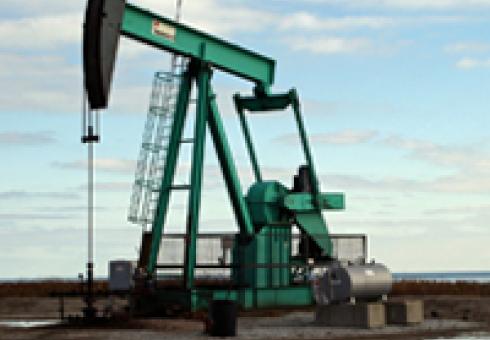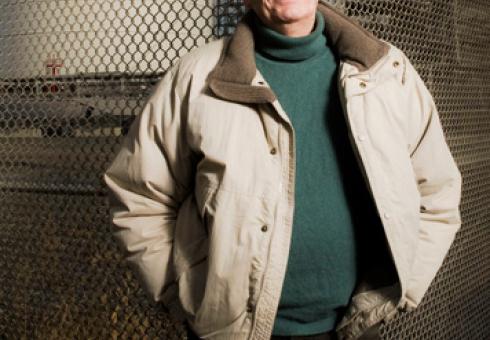News + Media
IMF-MIT study shows immediate – but realistic – actions are needed to confront climate change.
As global leaders prepare to gather for the Rio+20 sustainable development summit in Brazil next week, the International Monetary Fund (IMF) and a collection of economists from MIT and other organizations has released a report to help leaders confront the price tag associated with climate change. The publication— Fiscal Policy to Mitigate Climate Change: A Guide for Policymakers—details the most effective methods to reduce emissions and contain costs, namely through carbon pricing.
Until now, leaders have focused on slowing warming to 2 degrees Celsius to prevent catastrophic changes associated with climate change. Because this would mean taking drastic measures to hold emissions at about today's levels, researchers at MIT argue that leaders should be realistic and start smaller because the time to act is quickly running out. Their research—Emissions Pricing to Stabilize Global Climate—is a chapter within the IMF guide.
“Negotiations on the exact emission reduction target have been going on for a long time without much substantial progress,” says Sergey Paltsev, lead author of the MIT study and associate director for economic research at the Joint Program on the Science and Policy of Global Change. “But it is better to start with some policy that reduces emissions because even a small initial step is important as it sets the process on track.”
IMF’s Managing Director Christine Lagarde points to a tax or trade system.
“Perhaps we can help with a simple concept that everybody can understand—getting the prices right,” Lagarde said in a speech at the Center for Global Development. “Getting the prices right means using fiscal policy to make sure that the harm we do is reflected in the prices we pay. I am thinking about environmental taxes or emissions trading systems under which governments issue—and preferably sell—pollution rights.”
The MIT research suggests an emissions price—organized through either a tax or cap-and-trade system—of about $20 to $40 per ton by 2020 to help the world community reach less stringent targets that would keep warming to 2.9 or 3.6 degrees Celsius.
“These less stringent targets are more realistic and reachable, and they still reduce the risk of more severe climate impacts,” Paltsev says. But, he warns, “we have never experienced such changes and do not know exactly how the Earth will respond, so the smaller the changes we make, the greater the risk of something unexpected and bad happening.”
Still, making small changes is better than not acting at all, Paltsev says, and we shouldn’t wait for technology to fix the problem for us.
“We can wait for a miracle technology, like biofuels with carbon capture and storage, to appear and become economical— allowing us to reach more stringent target—but then we place our bets on something which may or may not materialize,” Paltsev says.
The longer the global community waits to take action, the higher the price tag could be and the less likely the world will be able to meet even less stringent targets. This could mean “unprecedented levels of damage and degradation” if current trends in production and consumption continue, United Nations Undersecretary General Achim Steiner said in a recent statement. He added, “The moment has come to put away the paralysis of indecision, acknowledge the facts and face up to the common humanity that unites all peoples.”
Andrew Steer, special envoy for climate change for the World Bank, agrees.
“We will turn the tide against climate change only when core economic policymakers wake up to the urgency of the issue and factor it into their fiscal and economic policies,” he said.
Making progress one step at a time
Even if all countries were able to agree on a uniform path forward, slowing emissions would require a complex burden-sharing system including incentives and compensation for emerging and developing countries—continuing an ongoing struggle about who pays what to confront the challenge.
While such an international effort may take time, the Green Climate Fund—formed in Cancun, Mexico, in 2010—could help developing countries. Meanwhile, major emitters like the United States, European Union and China could establish a relatively small carbon tax, the revenue from which could be returned to citizens to balance out the higher energy prices and increase public support. The idea is similar to parts of a proposal by U.S. Sen. Maria Cantwell (D-Wash.).
Still, cap-and-trade—a system invented by American economists—is far from being implemented in the United States, as countries around the world take steps to implement the system—like China.
“Just as many of our best innovations are produced in China, they may beat us in implementing such a system,” John Reilly, a co-director of the MIT Joint Program on the Science and Policy of Global Change and an author of the IMF chapter, said recently. "We're really being left behind.”
China is not the only country that has an edge on the United States. The EU, Australia, New Zealand and South Korea have already begun to set hard emission limits, and cap-and-trade programs are gaining traction in Brazil and Mexico as well.
Joëlle Chassard, manager of the Carbon Finance Unit of the World Bank, said in a statement that it was heartening to “see increasing interest in, and support for, new market-based mechanisms to mitigate climate change.”
Paltsev agrees that these systems are encouraging and useful, even at the local level. But, he says, “It is also important to harmonize the efforts” and “all major emitters, including the U.S., need to participate.”
Quito, Ecuador, is not considered a global leader by most measures. But there is one way in which Quito is at the forefront of metropolises worldwide: in planning for climate change.
By: Katherine Bagley
While the national climate debate is fixed on whether Earth is warming, climate scientists are focused on understanding how bad it will be.

The global warming debate in Congress, the states and on the campaign trail centers on two issues: Is Earth warming, and if so are humans to blame?
But ask most climate scientists, and they'll tell you that these are the only questions not in dispute. Climate change is a matter of how bad and by when, they'll say—not whether.
"Scientists are inherently skeptical," says Lonnie Thompson, a paleoclimatologist at Ohio State University, who has led studies of glaciers and ice sheets in 16 countries. "After enough evidence and observation, though, you have to start to accept findings. That is what happened with climate change. This wasn't a rash conclusion."
"There is not any serious debate about whether anthropogenic climate change is happening," says Daniel Sarewitz, co-director of the Consortium for Science, Policy and Outcomes at Arizona State University and a professor of science and society. "Scientists are certain about that, and it is unfortunate that the national debate is lagging so far behind."
The public and political discourse on global warming was framed by the 2007 report of the UN Intergovernmental Panel on Climate Change (IPCC), which concluded that climate change is occurring and human activity is the cause. That seminal report, and the subsequent coverage and debate, split the country into two partisan camps, with Democrats generally accepting the scientific consensus and Republicans questioning or flat-out denying it.
Missing from the discussion is the perhaps surprising, and rising, view of many scientists—that the UN climate panel gravely underestimated the immediacy and danger of global warming.
The IPCC process itself is partly, though not entirely, to blame. "It takes seven years to produce an IPCC report," says Thompson, who is also an IPCC author. "By the time it is published, the science is already dated ... and the models being used aren't accurately assessing how rapidly these changes are taking place."
There are real-world implications at stake, Thompson says. "We are in for tougher scenarios than what are being relayed in the reports."
A Flawed IPCC Assumption
The IPCC, the world's leading scientific body on global warming, is charged by the UN with assessing research and releasing periodic reviews of climate risks, which governments often use to set targets for cutting carbon emissions. In 2007, the panel shared the Nobel Peace Prize with Vice President Al Gore.
At the core of its assessments are IPCC "scenarios"—summaries of coming climatic conditions like global temperature and sea-level rise, which are based on a number of assumptions about future greenhouse gas emissions. One of those assumptions is that the world will make good on its carbon-cutting pledges.
Therein lies a key flaw, says John Reilly, co-director of the Massachusetts Institute of Technology's (MIT) Joint Program on the Science and Policy of Global Change and an expert on climate economic models. Many nations have failed to take promised steps to slash global warming emissions, particularly China and the United States, the world's biggest polluters. Even in the European Union greenhouse gases are on the rise. Yet the IPCC doesn't account for this.
The result, says Reilly, is that emissions today are higher than what the IPCC predicted in 2007. The panel's middle-of-the-road scenarios, for example, estimate that the world would emit between 27 and 28 billion metric tons of carbon dioxide in 2010. In reality, 30.6 billion metric tons of CO2 were released that year, the latest figures available, says data from the International Energy Agency. While that may seem like a small difference to a lay person, climate experts say that small increases can steamroll into something much bigger.
What Newer Climate Models Show
In 2009, Reilly and his colleagues at MIT, along with researchers from Penn State, the Marine Biological Institute in Massachusetts and the U.S. Environmental Protection Agency, decided to model forecasts for climate that assumed the world would continue with business as usual.
Their results, published in the June 2012 issue of Climatic Change and online last year, found that without major greenhouse gas cuts the median global temperature would increase by 5 degrees Celsius (9 degrees Fahrenheit) by 2100, compared to the IPCC's worst-case prediction of a 3.5 degree Celsius rise (6.3 degrees Fahrenheit).
The study found that the Arctic would warm up to three times as much as was foreseen by the IPCC. There would also be more severe extreme weather events and greater ocean warming, sea-level rise and ocean acidification.
"The IPCC suite of scenarios provide ... a bit too rosy of a picture," says Reilly. "Our study shows that without action, there is virtually no chance that we won't enter very dangerous territory."
Even moderate action isn't likely to help. Follow-up work by these same researchers published this year in MIT's annual Energy and Climate Outlook found that if countries achieve the emission cuts they promised at international climate negotiations, the global temperature would still increase by over 4 degrees Celsius (7.2 degrees Fahrenheit), with a significant chance of a 5 degree Celsius rise by century's end
For some scientists, however, the IPCC's findings are extreme.
"I'm surprised there are those who think the IPCC is too conservative," says John Christy, atmospheric scientist at the University of Alabama in Huntsville, IPCC author in 2001 and a well-known skeptic of human-caused climate change. "I think the simple evidence is very clear—the IPCC models overestimate the warming of the climate system." The IPCC declined to comment on the record.
Missing Ice Sheets and Slow Timing
Perhaps the biggest controversy surrounding the IPCC scenarios is that they omit the rapid melting of the Greenland and Antarctic ice sheets in sea-level rise projections.
Several researchers, including Thompson, the polar ice expert from Ohio State University, and James Hansen, head of the NASA Goddard Institute for Space Studies, have been vocal critics of that omission, which they say dramatically skews the IPCC scenarios. If the Greenland and Antarctic ice sheets, the only two in the world, continue to melt at their current pace, Thompson and other scientists believe sea levels could rise several feet and swamp coastlines this century, not the 8 to 17 inches projected in the IPCC mid-range scenarios.
"Those [ice sheets] are the big elephants in the room," says Thompson. "They are going to play a big role, yet they aren't taken into account." (The IPCC left them out because of uncertainty about how to predict effects of ice-sheet meltdowns in climate models.)
Some scientists say the very nature of the IPCC process means its reports can never be truly up to date. Research must be published at least two years before the release of an IPCC assessment to be considered. That lag time also means the projections will be on the conservative side, Thompson says. He argues that as scientific understanding of climate change improves, and as CO2 emissions continue to rise, the predictions grow more dire.
Reilly, the MIT scientist, says most scientists studying climate change today are viewing "the seemingly unstoppable rise in global greenhouse emissions" with "increasing alarm."
Why Aren't Scientists More Vocal?
So, if climate scientists are convinced that the Earth is warming faster than expected, then why aren't more speaking out?
The researchers interviewed for this story said many have retreated into silence to avoid the small but vocal band of climate skeptics. "Researchers find it hard to raise significant questions even within the climate science community for fear that it will be exploited by the skeptics," says Sarewitz, the science and society professor from Arizona State University.
"Climate science is a huge, sprawling area of discussion," explains Sarewitz, and skeptics are known to seize on arguments as proof that the science linking human activity to global warming is dubious.
Indeed, there are still many points not understood in climate science. Long-term changes in solar activity and their effects on the climate system are not well known. The effect of aerosols on global temperature is still uncertain, because they all react differently to atmospheric heat. Sulfates, for example, block sunlight, which in turn can cool the climate, while black carbon absorbs sunlight and can accelerate warming. Few doubt that sea levels will rise, but how fast and by how much is hotly contested.
There are also major limitations with climate models. They can predict whole-Earth scenarios better than localized scenarios, meaning regional trends still can't be predicted with much accuracy. They also don't reflect the physics of cloud formation well, an issue the IPCC has made a research priority.
While none of these undermine the consensus that climate change is human-caused, Sarewitz says, any dissension helps skeptics chisel away at the perception of scientific agreement. "It all makes it hard for the disinterested citizen ... to actually know how to untangle the conversation and who to trust."
Is silence the answer? Not according to Thompson of Ohio State, who admits to being "frustrated' by skeptic tactics and scientists' lack of response to them. "If they want to be more than just a historian documenting the change—if they want to make a difference—[scientists] have to speak out about these issues." Thompson himself regularly speaks about climate change, even allowing TV and print journalists to join his polar ice expeditions.
Reilly agrees. "Without interaction [with the public], it becomes too easy for people to vilify or defy those who disagree or agree with them, and there is little chance for real understanding."
The world’s air has reached what scientists call a troubling new milestone for carbon dioxide, the main global warming pollutant.
Monitoring stations across the Arctic this spring are measuring more than 400 parts per million of the heat-trapping gas in the atmosphere. The number isn’t quite a surprise, because it’s been rising at an accelerating pace. Years ago, it passed the 350 ppm mark that many scientists say is the highest safe level for carbon dioxide. It now stands globally at 395.
So far, only the Arctic has reached that 400 level, but the rest of the world will follow soon.
“The fact that it’s 400 is significant,” said Jim Butler, global monitoring director at the National Oceanic and Atmospheric Administration’s Earth System Research Lab in Boulder, Colo. “It’s just a reminder to everybody that we haven’t fixed this and we’re still in trouble.”
Carbon dioxide is the chief greenhouse gas and stays in the atmosphere for 100 years. Some carbon dioxide is natural, mainly from decomposing dead plants and animals. Before the Industrial Age, levels were around 275 parts per million.
For more than 60 years, readings have been in the 300s, except in urban areas, where levels are skewed. The burning of fossil fuels, such as coal for electricity and oil for gasoline, has caused the overwhelming bulk of the man-made increase in carbon in the air, scientists say.
It’s been at least 800,000 years — probably more — since Earth saw carbon dioxide levels in the 400s, Butler and other climate scientists said.
Until now.
Readings are coming in at 400 and higher all over the Arctic. They’ve been recorded in Alaska, Greenland, Norway, Iceland and even Mongolia. But levels change with the seasons and will drop a bit in the summer, when plants suck up carbon dioxide, NOAA scientists said.
So the yearly average for those northern stations likely will be lower and so will the global number.
Globally, the average carbon dioxide level is about 395 parts per million but will pass the 400 mark within a few years, scientists said.
The Arctic is the leading indicator in global warming, both in carbon dioxide in the air and effects, said Pieter Tans, a senior NOAA scientist.
“This is the first time the entire Arctic is that high,” he said.
Tans called reaching the 400 number “depressing,” and Butler said it was “a troubling milestone.”
“It’s an important threshold,” said Carnegie Institution ecologist Chris Field, a scientist who helps lead the Nobel Prize-winning Intergovernmental Panel on Climate Change. “It is an indication that we’re in a different world.”
Ronald Prinn, an atmospheric sciences professor at the Massachusetts Institute of Technology, said 400 is more a psychological milestone than a scientific one. We think in hundreds, and “we’re poking our heads above 400,” he said.
Tans said the readings show how much the Earth’s atmosphere and its climate are being affected by humans. Global carbon dioxide emissions from fossil fuels hit a record high of 34.8 billion tons in 2011, up 3.2 percent, the International Energy Agency announced last week.
The agency said it’s becoming unlikely that the world can achieve the European goal of limiting global warming to just 2 degrees based on increasing pollution and greenhouse gas levels.
“The news today, that some stations have measured concentrations above 400 ppm in the atmosphere, is further evidence that the world’s political leaders — with a few honorable exceptions — are failing catastrophically to address the climate crisis,” former Vice President Al Gore, the highest-profile campaigner against global warming, said in an email. “History will not understand or forgive them.”
But political dynamics in the United States mean there’s no possibility of significant restrictions on man-made greenhouse gases no matter what the levels are in the air, said Jerry Taylor, a senior fellow of the libertarian Cato Institute.
“These milestones are always worth noting,” said economist Myron Ebell at the conservative Competitive Enterprise Institute. “As carbon dioxide levels have continued to increase, global temperatures flattened out, contrary to the models” used by climate scientists and the United Nations.
He contends temperatures have not risen since 1998, which was unusually hot.
Temperature records contradict that claim. Both 2005 and 2010 were warmer than 1998, and the entire decade of 2000 to 2009 was the warmest on record, according to NOAA.
Research shows China’s impact on climate change, as well as its potential to shape the path forward.
As climate negotiators wrap-up talks in Bonn, Germany, this week, a major point of contention is who needs to do what to slow global warming. Nations such as China and the United States have held back from making substantial emission reduction pledges in the past, as both nations waited for the other to act. But new research out of MIT shows the importance of all major nations taking part in global efforts to reduce emissions—and in particular, finds China's role to be crucial.
The report—titled "The Role of China in Mitigating Climate Change"—published in the journal Energy Economics, compares the impact of a stringent emissions reduction policy with and without China's participation. It finds that China's actions are "essential."
"As the largest greenhouse gas emitter in the world, without China, climate goals—like the 2 degrees Celsius target that most agree is necessary to prevent serious irreversible consequences—are out of reach," says Sergey Paltsev, the lead author of the study and the assistant director for economic research at MIT's Joint Program on the Science and Policy of Global Change.
Specifically, the study finds that with China's help the global community is able to limit warming to 2 degrees Celsius, relative to pre-industrial levels. But without China, we miss that mark by about 1 degree Celsius.
Not only will it be close to impossible to achieve the 2 degrees mark without China's participation, but emissions reductions will also be more expensive because substantial costs would shift to only some countries. That is why the researchers argue for a global economy-wide greenhouse gas tax that spreads the burden of responsibility.
But even in this best-case scenario, reducing emissions comes with a steep price tag. China could experience substantial GDP losses by the end of the century under the most stringent policy cases. These losses come from higher energy prices, which influence consumption and export dynamics.
"While strong reductions may turn out to be costly in China and may require some incentives from developed countries," Paltsev says, "that doesn't make China's actions any less important."
The researchers stress, however, that reaching that 2 degrees threshold with China's participation is only possible in the most optimistic case. And these days, there isn't much cause for optimism.
The researchers tested various levels of emission reduction plans—a global carbon tax of $10, $30 or $50. The various taxes would slow warming to 3.5, 2.4 and 2 degrees, respectively, by the end of the century, according to their analysis. With no global policy, the increase in warming is projected to be about 5.5 degrees Celsius.
These scenarios show that, "Even more modest and realistic goals require near universal participation of major greenhouse gas emitters," Paltsev says.
Top energy user today, climate leader tomorrow?
The importance of China's participation in a global climate treaty increases with each year, as the country's population, economy and energy use continue to grow rapidly.
From 2000 to 2010, China's energy use grew 130 percent. That's up from a growth of just 50 percent the previous decade. With a growing, wealthier population, China has become the world's largest energy consumer—and with it, the world's greatest source of greenhouse gas emissions.
China's share of global energy-related CO2 emissions has increased in just eight years from 14 percent in 2000 to 22 percent in 2008. Eighty percent of those emissions came from coal, making China the consumer of about half the world's coal.
But China is on a path toward doing something about their rapidly escalating energy use and emissions. They've recently announced they will be testing a pilot cap-and-trade program in select major cities in 2013, and plan to make the program national by 2015.
John Reilly, the co-director of the Joint Program on Global Change, pointed out recently the irony behind the plan. While the United States created the idea of cap and trade, he says, "just as many of our best innovations are produced in China, they may beat us in implementing such a system ... we're really being left behind."
Paltsev agrees that the system would be "a very good start" for China, allowing the country to reach its goal of reducing carbon intensity by 40 percent relative to 2005, and increasing the share of non-fossil fuels by 15 percent by 2020. But, he says, "these actions are still not enough, making almost no substantial difference in reducing global emissions."
In fact, the change, taken by China alone, would only reduce global temperature by about 0.1 degree Celsius in 2020.
But Tim Yeo, who chairs the United Kingdom Parliament's energy committee, recently told The Financial Times that if China did impose a national cap and trade system, "It's game over for the rest of the world ... Everyone will have to do it, including the U.S."
Paltsev agrees. "While the system would only be a start for China, as the country would still have a long way to go in reducing emissions, it would likely influence other countries—like the U.S.—to follow. But time is really of the essence."
To learn more about the Joint Program on Global Change's work in China, visit the China Energy and Climate Project website at: http://globalchange.mit.edu/CECP/.
The dramatic decoupling of crude oil and natural gas prices in 2009 has created a riddle of profound importance to energy investors and company balance sheets, two Massachusetts Institute of Technology researchers conclude in a new study.
Traditionally, oil prices have been used to gauge the natural gas market; but new research shows that the future of what is currently a cheap fuel is really anyone's guess. Natural gas prices neared the lowest they've been in about a decade this past winter, as utilities scrambled to take advantage of the fuel's low price tag and producers began to turn away from the low-profit fuel. According to new numbers from the U.S. Energy Information Administration, the proportion of natural gas used to generate electricity soared to almost 35 percent in February—the highest ever for that month—while production saw its biggest decline in a year. These factors have led some to believe prices will rise again, and soon. Not so fast, say researchers at MIT.
Natural gas prices neared the lowest they've been in about a decade this past winter, as utilities scrambled to take advantage of the fuel's low price tag and producers began to turn away from the low-profit fuel. According to new numbers from the U.S. Energy Information Administration, the proportion of natural gas used to generate electricity soared to almost 35 percent in February—the highest ever for that month—while production saw its biggest decline in a year. These factors have led some to believe prices will rise again, and soon. Not so fast, say researchers at MIT.
Their study, featured in the latest issue of The Energy Journal, compares oil and natural gas prices from the early 1990s to today, showing a relationship between the pricing of the two fuels. But the nature of that relationship is constantly changing and is subject to external pressures, making it extremely difficult—if not impossible—to predict the price of natural gas in the short or long term.
"The tie between gas and oil has been exaggerated," says John Parsons, the lead author of the study and executive director of MIT's Joint Program on the Science and Policy of Global Change and Center for Energy and Environmental Policy Research. "Parity will get re-established, but it might take a long time and it might be at a different level than you thought."
The research shows that, besides the price of oil, two forces heavily influence the gas market: long-term forces, like technological change, and short-term volatility due mostly to weather or seasonal changes. Both of these forces are currently at work, as prices per million British thermal units have fallen from $10 back in 2008 to $4 last fall to $2.40 today.
Parsons attributes a majority of the drop since last fall to weather, but points to new technology known as hydraulic fracturing—along with other factors such as the global recession—as the cause of the much larger drop in price over time. He says the price may recover from the short-term drop quickly—perhaps back to $4 in just a couple years—but price recovery from the effects of hydrofracking technology could take much longer.
"And so the danger is [that] we say that there's parity" between oil and gas prices, Parsons says, "and it gives people the impression that the parity establishes itself quickly and they discount the price signal and try to keep going with producing gas."
This is what happened when prices fell in the past: Producers were slow to take the price fall seriously because of the usual short-term volatility attributed to weather and seasonal changes.
How the gas market will shape up in the long term is anyone's guess, Parsons says, largely because untapped resources are a wild card. Right now, the U.S. has a very cheap resource that provides a short-term cushion of low-priced gas. If hydraulic fracturing turns out to have limited applications, gas prices probably won't stay low for very long. But if other parts of the world rich in natural gas choose to use hydraulic fracturing, natural gas could turn into a revolutionary fuel, he says.
That will "affect the price of gas and the price of oil and the pattern of electricity production globally," Parsons says. "But none of us know."
The researchers conclude that as much as oil and gas prices have been somewhat intertwined in the past, it is likely they will continue to affect each other. Future changes in gas-to-liquid technology, for example, would further strengthen the gas-oil relationship—likely driving oil prices down, gas prices up, and re-establishing some parity between the two.
RELATED — A Shale Gas Revolution?
Caleb Waugh, co-president of MIT’s Energy Club and a doctoral student in nuclear science and engineering, says that energy is the defining challenge of this generation.
New York Times’ Andrew Revkin shares lessons with MIT faculty, students at Earth Day colloquium.












